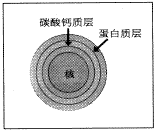Abstract The composition of fabric pearlescent ink was introduced, and the factors affecting the ink fastness and pearlescent effect when formulating pearlescent ink were discussed, including the type of binder, the amount of pigment and cross-linking agent, and the drying conditions. At the same time, the pearl ink ink was also introduced. Web printing process and process requirements.
Keywords pearlescent ink screen printing
Pearlescent pigments are translucent microflaky pigments that produce a pearlescent effect. According to their sources can be divided into natural pearlescent pigments and synthetic pearlescent pigments. Natural pearlescent pigments are limited in their use due to their unique hue, high price, and shortage of raw materials. Since the successful development of non-toxic, good-performance titanium-based synthetic pearlescent pigments, pearlescent pigments have been widely used. Pearlescent inks formulated with pearlescent pigments are used in a large number of applications in the printing industry, allowing printed products to have unique three-dimensional effects and artistic feelings, giving people a feeling of luxury. One of them is the preparation of fabric pearl ink for printing, so that the fabric with a crystal clear gloss, improve the quality of fabric printing. This article mainly discusses the factors affecting the fastness and pearlescent effect when pearlescent inks are formulated; the influence of rheological properties of pearlescent inks on printing; and the textile screen printing process using pearlescent inks.
First, the composition of fabric pearl ink
Printing fabric ink is commonly known as printing paste and consists of pigments, binders, thickeners and some additives. In fabric pearlescent inks, pearlescent pigments are used as the pigments, and the pearlescent pigments are adjusted to a paste paste with a wetting agent. The pigment itself does not have an affinity for the fiber, and the adhesive is used to form a transparent resin film with certain elasticity and abrasion resistance on the fabric fiber. After printing, the solvent and other liquid medium in the adhesive are evaporated on the fabric after being printed. A few micrometers of film layers are formed, which are coated with pigment ions that adhere to the fibers, ie, binders mechanically bond the pigments to the surface of the fibers of the fabric. Therefore, the role of the binder in the fabric pearl ink is very important, the hand feeling, various fastness of the printed fabric, and the rheology and dryness of the ink are largely determined by the variety and quality of the binder. The addition of a thickener can increase the consistency of the ink, allowing the fabric pearl ink to have a clear pattern profile when printed. Additives can improve ink performance in different ways. Such as adding a crosslinker can improve the printing fastness and so on.
Second, pearlescent pigment
The original pearlescent pigment was a natural fish silver made from fish scales. Since a large number of scale pigments are extremely difficult to extract and expensive, people began to develop various synthetic pearlescent pigments. In the 1960s, a new pearl pigment was developed. It uses titanium dioxide to encapsulate mica. This is the mica titanium pearlescent pigment. It has a beautiful pearl luster and metallic luster effect. The coarser pearlescent pigments can produce the visual effect of starlight scintillation, and the finer pearlescent pigments have a soft luster similar to silk.
Natural or artificially cultivated pearls are hierarchical structures composed of a core of calcium carbonate and protein layers alternately wrapped (Figure 1). Due to the interaction of the refracted light, the reflected light, and the transmissive light in a specific layer, a rainbow-like color or interference color is generated (FIG. 2). Synthetic pearlescent pigments are made according to the structural principle of natural pearls, and thus have the property of natural pearls to refract and reflect light. Incident light is reflected or refracted by the film; part of the light penetrates the film and is partially reflected. The color of reflected light varies with the thickness of the thin film layer (Figure 3). For example, Iriodin Pearlescent Pigment from Germany Merck, which consists of a mica wafer, whose outer layer encloses metal oxides with high refractive index, such as titanium dioxide and iron oxide. High-refractive-index metal oxides, low refractive index mica wafers, and low-refractive-index peripheral media are arranged in parallel to produce a visible rainbow color (Figure 4). The interference color can be obtained by controlling the coating thickness of titanium dioxide on tiny mica wafers. Mica is coated with other metal oxides such as chromium oxide or ferric oxide to produce a metallic color. The attractive gold color and brown color are the result of the simultaneous mixing of titanium dioxide and ferric oxide (Fig. 5).

Figure 1 Pearl structure

Fig. 2 Reflection of light in mother of pearl

Fig. 3 Interference light color formed by films of different thicknesses

Figure 4 The structure of pearlescent pigments

Fig. 5 Coloring principle of different pearlescent pigments
Since the lamellar structure of the pearlescent pigment determines the pearlescent effect, the pearlescent pigment can be mixed with the ink only slightly to avoid damage to the surface of the pearlescent pigment. Rude mechanical processing, for example, using a three roll mill, a high speed mixer, or a ball/bead mill can break the pigment and tarnish it. In general, pearlescent pigments are added evenly in the final process of ink production.
Abs Luggage Set,Airport Brand Luggage,Travel Luggage Bag,Abs Pc Zip Luggage Set
Yongxin Juanhua Leather & Bags Co., Ltd , http://www.luggagegld.com